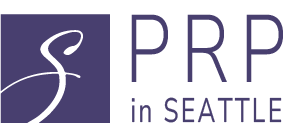Introduction
Hair loss affects millions of Americans, with more than 1 in 4 women experiencing hereditary hair thinning and approximately 85% of men showing signs of significant hair loss by age fifty. If you’re experiencing thinning hair or pattern baldness, PRP hair restoration offers a revolutionary, non-surgical solution that harnesses your body’s natural healing power. Platelet rich plasma, also known as PRP, is a component of blood that helps your blood clot correctly and heal wounds, making it an ideal treatment for stimulating dormant hair follicles.
What Is PRP Hair Restoration?
PRP therapy is a three-step process that works by drawing blood, processing it, then injecting it into the affected area. The treatment utilizes platelet-rich plasma derived from your own blood to naturally stimulate hair growth. Platelet-rich plasma consists of two elements: plasma, or the liquid portion of blood, and platelets, a type of blood cell that plays an important role in healing throughout the body. Platelets are well-known for their clotting abilities, but they also contain growth factors that can trigger cell reproduction and stimulate tissue regeneration or healing in the treated area.
H3: The Science Behind PRP
Platelets contain growth factors that stimulate hair follicles, speeding up the hair growth cycle and improving the thickness of existing hair. Studies show that the increased concentration of growth factors in platelet-rich plasma may stimulate or speed up the healing process, shortening healing time for injuries, decreasing pain and even encouraging hair growth. This makes PRP an effective treatment for various types of hair loss, including androgenetic alopecia and stress-related thinning.
Step-by-Step PRP Hair Restoration Process
Step 1: Initial Consultation
Your journey begins with a comprehensive consultation at specialized clinics like PRP hair restoration in Seattle, Bellevue, and Kirkland. During the consultation, your provider will assess your hair loss and discuss your goals. They will answer any questions before customizing a treatment plan based on your unique needs.
Step 2: Blood Collection
10 to 60 milliliters (mL) of your blood is drawn, typically from your arm, and put into a centrifuge. This is a machine that spins rapidly to separate fluids of different densities. The blood draw process is similar to a routine blood test and requires proper hydration beforehand.
Step 3: Processing the Blood
During the PRP preparation process, blood is taken from your arm and placed into a centrifuge machine. The centrifuge separates blood into fractions with different density, making it easy to harvest the PRP. After about 10 minutes in the centrifuge, your blood will have separated into distinct layers, allowing extraction of the concentrated platelet-rich plasma.
Step 4: Scalp Preparation
The next step is a layer of numbing cream to minimize discomfort, making the process virtually pain-free. The treatment area is thoroughly cleansed to ensure optimal conditions for the injections.
Step 5: PRP Injection
The PRP is processed and injected into the areas of your scalp affected by hair loss. One of our surgeons or certified injectors will inject the PRP into targeted areas on your scalp using fine needles for precise injection. The entire procedure typically takes 30-60 minutes from start to finish.
Benefits and Expected Results
Timeline for Results
The results of PRP treatment are most noticeable after several weeks for joint injections and six months for scalp injections. Most patients begin seeing initial improvements within 2-3 months, with full results taking approximately one year.
Treatment Schedule
Patients receive 3 treatments at 30-day intervals. For hair loss, treatment includes one PRP treatment per month for three months, followed by one treatment every three months for a year, and then one treatment yearly.
Why Choose PRP Hair Restoration?
PRP offers numerous advantages over traditional hair loss treatments:
- Natural Treatment: Because the treatments use a patient’s own tissues, PRP injections are safe and can be administered alone or used in conjunction with other procedures
- Minimal Side Effects: Most studies have shown that side effects of PRP are typically mild and short-lived, with no long-term health issues reported. Overall, clinical data supports PRP as a safe option for hair restoration
- No Downtime: Since PRP hair restoration is an injection treatment, there are no major side effects or complications associated with it when safely injected
- Proven Results: Our data clearly highlight the positive effects of PRP injections on male pattern hair loss and absence of major side effects. PRP may serve as a safe and effective treatment option against hair loss
Safety and Side Effects
A PRP injection is a low-risk procedure and does not usually cause major side effects. There’s no risk of contracting a communicable disease with PRP therapy because it involves injecting your own blood into your scalp. Common mild side effects include temporary soreness, bruising, or tenderness at injection sites that typically resolve within 2-5 days.
Conclusion
PRP hair restoration represents a breakthrough in non-surgical hair loss treatment, offering natural, safe, and effective results. By utilizing your body’s own healing mechanisms, this innovative therapy stimulates dormant follicles and promotes healthier, thicker hair growth. Whether you’re experiencing early-stage thinning or moderate pattern baldness, PRP therapy provides a scientifically-backed solution without the risks and downtime of surgical alternatives.
Ready to begin your hair restoration journey? Contact specialists offering PRP hair restoration in Seattle, Bellevue, and Kirkland to schedule your consultation and discover how this revolutionary treatment can help you achieve the fuller, healthier hair you deserve.
